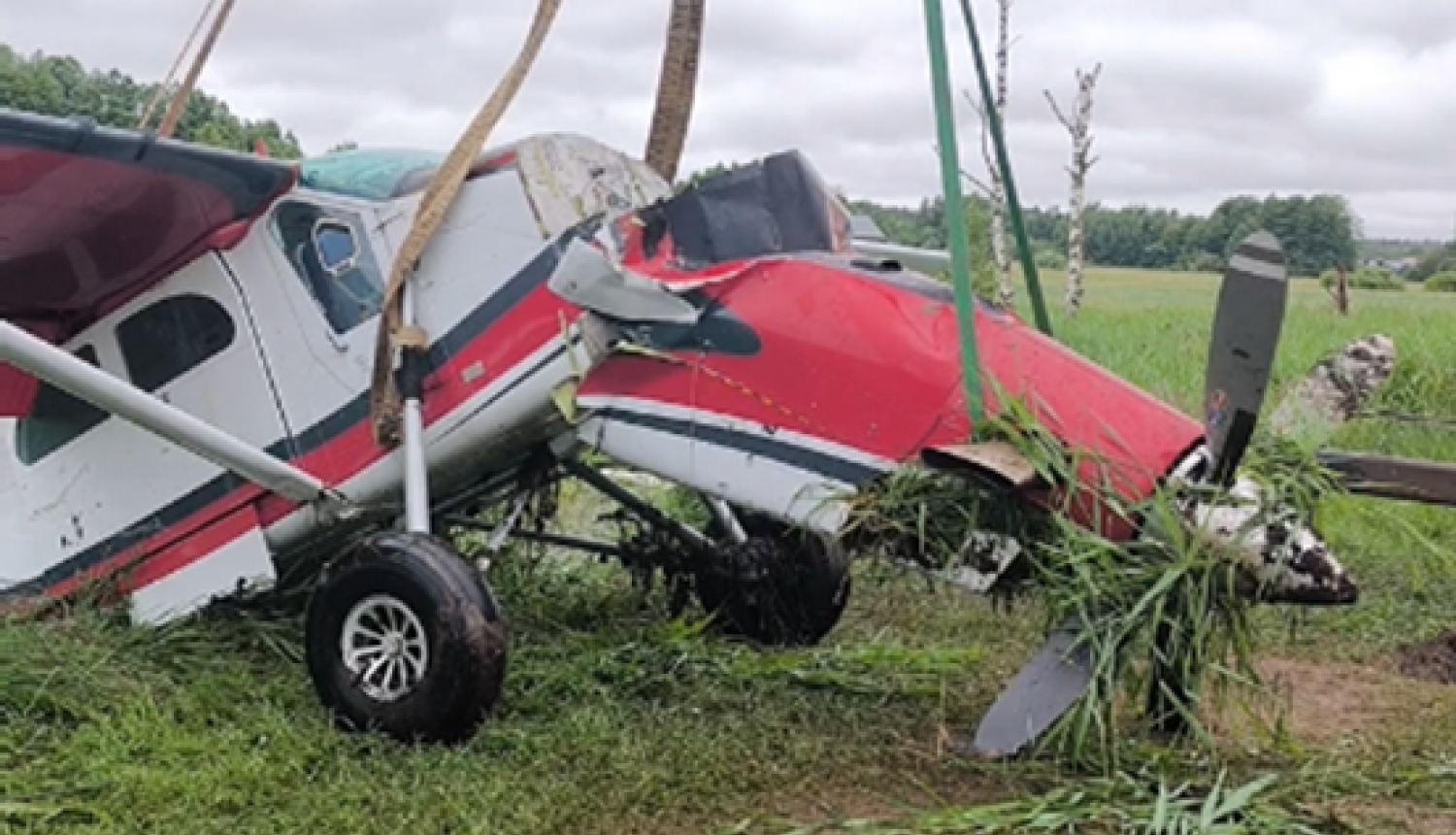On June 20, 2025, the Transport Accident and Incident Investigation Bureau completed the investigation into an aviation accident that occurred on June 19, 2024, in Babīte parish, Mārupe district, approximately three miles from Riga International Airport, involving an aircraft Pilatus PC-6/B2-H4 with registration number YL-YEA.
After two unsuccessful landing attempts at Limbaži airfield, the pilot decided to fly to Riga airport but made an emergency landing approximately three miles from Riga International Airport. During the landing, the aircraft slid into a drainage ditch filled with water, causing substantial damage to the front fuselage. The pilot was unharmed; however, the passenger (a parachutist) sustained moderate injuries and was transported to a medical facility.
The final report is available here: https://www.taiib.gov.lv/lv/media/737/download?attachment
The investigation concluded the following:
- After the parachute jump, the aircraft remained above the Limbaži airfield area at an altitude exceeding 10,000 feet.
- The pilot did not use an oxygen mask during the flight above 10,000 feet.
- Significant discrepancies were noted between the information provided by the pilot, radar data, the testimony of the parachutist remaining onboard, and eyewitness accounts.
- The pilot decided to fly towards Riga airport, heading into a warm front and against prevailing winds, relying on air traffic control assistance for landing at Riga airport, despite deteriorating weather conditions.
- It is likely that the pilot did not undertake necessary preventive actions for flying in adverse weather conditions, neglecting the aircraft manufacturer's procedures outlined in the flight manual.
- When aligned for landing, the aircraft theoretically had sufficient fuel and altitude to reach Riga airport at minimum engine thrust.
It is possible that after the engine ceased operating, the pilot incorrectly identified the cause and therefore did not follow the emergency procedures specified in the aircraft flight manual for engine failure.
Due to significant safety risks identified for passengers (parachutists) during flight, the Transport Accident and Incident Investigation Bureau issued the following safety recommendation to the aircraft operator SIA "DreamFlyer":
To ensure flight safety during parachuting operations, consider equipping the aircraft cabin with seatbelts or movement-restricting systems to prevent passengers (parachutists) from uncontrolled movement during flight.
Additionally, the following safety recommendations were issued to the State Agency "Civil Aviation Agency":
- To enhance flight safety during parachuting operations, assess the mandatory implementation of recommendations from EASA Safety Information Bulletin SIB No. 2018-18R1 into the Standard Operating Procedures of aircraft operators involved in parachuting activities.
- To ensure passenger safety during flights with Pilatus PC-6/B2-H4, registration YL-YEA, evaluate the aircraft’s suitability for parachuting operations.
- To ensure flight safety and parachuting operations planning, the Civil Aviation Agency, in collaboration with LIF, should develop procedures within manuals specifying criteria for forecasted and actual meteorological conditions. This will enable pilots to plan and timely cancel (30-60 minutes before anticipated meteorological changes) parachute lifts from airfields and justify cancellations based on mandatory criteria to prevent recurrence of similar incidents.
- To ensure continuous radio communications and uninterrupted oxygen supply to pilots during flights, the Civil Aviation Agency should evaluate the aircraft equipment suitability for parachuting operations above 10,000 feet. In collaboration with LIF, a procedure for the use of oxygen masks should be established to prevent altitude hypoxia.


